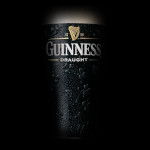Attraverso il nostro store puoi supportare il forum e nel contempo, ottieni un simpatico gadget da poter utilizzare!

CLICCA QUI
utilizza il codice jb20
e ottieni subito uno
sconto del 20%
su tutti gli articoli!

CLICCA QUI
utilizza il codice jb20
e ottieni subito uno
sconto del 20%
su tutti gli articoli!
-
 La perra Blanco
di Donatello Nahi
La perra Blanco
di Donatello Nahi
[Oggi alle 12:42 PM] -
 La taverna dei Jamblers
di Vu-meter
La taverna dei Jamblers
di Vu-meter
[Oggi alle 11:49 AM] -
 Little Barrie e James Walbourne, consigli per l'ascolto...
di Donatello Nahi
Little Barrie e James Walbourne, consigli per l'ascolto...
di Donatello Nahi
[15 Gennaio, 2026, 11:40 PM] -
 Sistemi wireless
di Vu-meter
Sistemi wireless
di Vu-meter
[15 Gennaio, 2026, 11:21 PM] -
 Ampli per Buskers
di Santano
Ampli per Buskers
di Santano
[15 Gennaio, 2026, 09:05 PM] -
 Marcus King
di robland
Marcus King
di robland
[15 Gennaio, 2026, 06:22 PM] -
 Nachoguitars
di shezlacroix
Nachoguitars
di shezlacroix
[15 Gennaio, 2026, 02:00 PM] -
 Consigli per un Dumble Sound in a box
di Donatello Nahi
Consigli per un Dumble Sound in a box
di Donatello Nahi
[15 Gennaio, 2026, 12:30 PM] -
 Cosa ascoltano ultimamente i Jamblers?
di Vu-meter
Cosa ascoltano ultimamente i Jamblers?
di Vu-meter
[13 Gennaio, 2026, 10:07 PM] -
 Jamblers vs AI: suggerimento per setup Pedaliera +...
di Nadir
Jamblers vs AI: suggerimento per setup Pedaliera +...
di Nadir
[13 Gennaio, 2026, 03:47 PM] -
 E poi arriva Rick Beato
di attonauta
E poi arriva Rick Beato
di attonauta
[13 Gennaio, 2026, 02:37 PM] -
 Metodo di studio
di Jakmon
Metodo di studio
di Jakmon
[13 Gennaio, 2026, 12:11 PM] -
 Yamaha Storia II
di shezlacroix
Yamaha Storia II
di shezlacroix
[12 Gennaio, 2026, 10:00 AM] -
 E poi arriva Fanton....
di b3st1a
E poi arriva Fanton....
di b3st1a
[11 Gennaio, 2026, 03:25 PM] -
 Quale Octaver?
di robland
Quale Octaver?
di robland
[10 Gennaio, 2026, 10:26 PM] -
 Cornerstone Nucleo
di Vu-meter
Cornerstone Nucleo
di Vu-meter
[10 Gennaio, 2026, 03:39 PM] -
 Swello by EHX
di Vu-meter
Swello by EHX
di Vu-meter
[10 Gennaio, 2026, 10:55 AM] -
 Le radici del blues elettrico
di Donatello Nahi
Le radici del blues elettrico
di Donatello Nahi
[09 Gennaio, 2026, 11:56 PM] -
 Ci lascia Eddie Van Halen
di Vu-meter
Ci lascia Eddie Van Halen
di Vu-meter
[07 Gennaio, 2026, 11:28 AM] -
 Colonne sonore James Bond
di robland
Colonne sonore James Bond
di robland
[07 Gennaio, 2026, 01:26 AM] -
 Pedale Rotto... Mxr Microamp
di Prosit
Pedale Rotto... Mxr Microamp
di Prosit
[06 Gennaio, 2026, 08:23 PM] -
 JHS Kodiak tremolo
di robland
JHS Kodiak tremolo
di robland
[06 Gennaio, 2026, 06:44 PM] -
 Suonare nello stile di : Buddy Guy
di Donatello Nahi
Suonare nello stile di : Buddy Guy
di Donatello Nahi
[05 Gennaio, 2026, 11:09 PM] -
 La Black Strat di nuovo all'asta
di Prosit
La Black Strat di nuovo all'asta
di Prosit
[05 Gennaio, 2026, 04:13 PM] -
 Il mio primo pedale?
di Kla
Il mio primo pedale?
di Kla
[04 Gennaio, 2026, 12:31 PM] -
 Blues su un solo accordo
di Vu-meter
Blues su un solo accordo
di Vu-meter
[04 Gennaio, 2026, 09:45 AM] -
 Pickaso Guitar Bow - l'archetto per chitarra
di Vu-meter
Pickaso Guitar Bow - l'archetto per chitarra
di Vu-meter
[03 Gennaio, 2026, 04:11 PM] -
 Parafang!!
di Santano
Parafang!!
di Santano
[02 Gennaio, 2026, 07:10 PM] -
 Problema Schermatura alloggio Pick Up?
di Shinechoes
Problema Schermatura alloggio Pick Up?
di Shinechoes
[01 Gennaio, 2026, 08:36 PM] -
 Regalo di Natale
di robland
Regalo di Natale
di robland
[31 Dicembre, 2025, 07:18 PM]
45 Anni fa - MADE IN JAPAN
Aperto da LawHunter, 16 Agosto, 2017, 09:50 AM
Discussione precedente - Discussione successiva
Azioni


